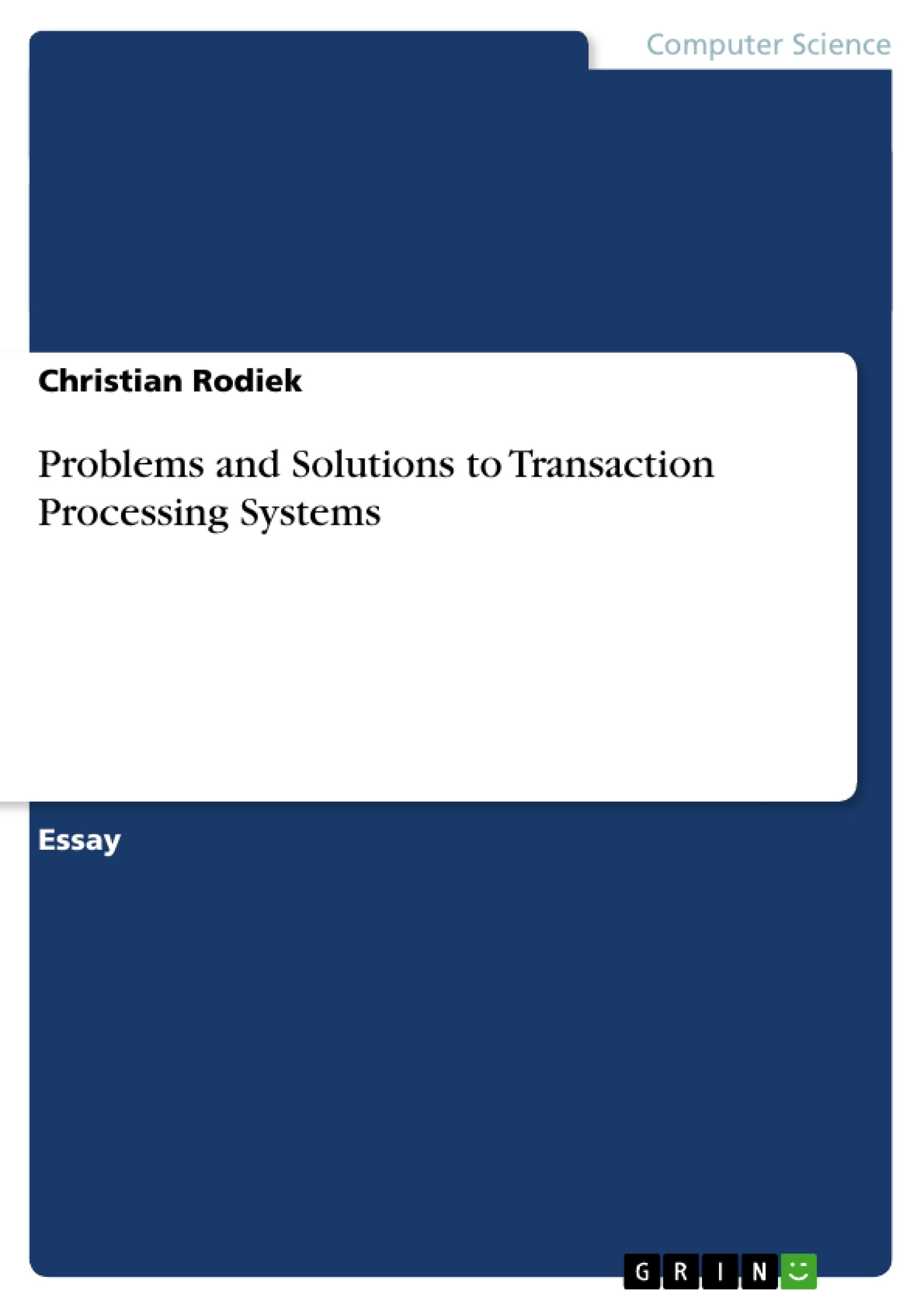This report will discuss problems and solutions to transaction processing (TP) systems.
A brief introduction to the issue by defining and describing a transaction and a TP system is to give here before beginning with the core discussion.
A transaction in general implants changes made in the real world in a physical database [1]. There-fore business transactions are multiple basic operations involving exchanges (cash, credit, informa-tion) that have financial implications, such as customer placing an order or someone paying parking tickets and they establish a connection between an organization and its database [3]. A TP system is a form of data base management system that processes business transactions [1]. Usually there exit several different systems in one organization. Examples of TP applications are payroll, inventory, order processing, reservations, account processing in banks, and stock trading [3]. Considering the highly increased volume of transactions processed by organizations due to the credit card revolution and the Internet and their need to process the transactions in a timely fashion there arise several problems and performance constraints to the transaction processing and its systems, which need to be addressed. To identify a certain performance of a TP system the Input/Output (I/O) of a system is a adequate measure.
In the following it will be assumed that the organizations already provide of Transaction Processing Facilities (TPF), that Main Memory Database Systems (MMDS) are not practical, that most TP sys-tems are already distributed [i.e. that the organization have implemented a Distributed Database Management System (DDMS)] and finally that the organizations have the fastest available comput-ers & networks already installed.
I. Introduction
This report will discuss problems and solutions to transaction processing (TP) systems.
A brief introduction to the issue by defining and describing a transaction and a TP system is to give here before beginning with the core discussion.
A transaction in general implants changes made in the real world in a physical database [1].
Therefore business transactions are multiple basic operations involving exchanges (cash, credit, information) that have financial implications, such as customer placing an order or someone paying a parking ticket and they establish a connection between an organization and its database [3].
A TP system is a form of data base management system that processes business transactions [1].
Usually there exit several different systems in one organization. Examples of TP applications are payroll, inventory, order processing, reservations, account processing in banks, and stock trading [3].
Considering the highly increased volume of transactions processed by organizations due to the credit card revolution and the Internet and their need to process the transactions in a timely fashion there arise several problems and performance constraints to the transaction processing and its systems, which need to be addressed. To identify a certain performance of a TP system the Input/Output (I/O) of a system is a adequate measure.
In the following it will be assumed that the organizations already provide of Transaction Processing Facilities (TPF), that Main Memory Database Systems (MMDS) are not practical, that most TP systems are already distributed [i.e. that the organization have implemented a Distributed Database Management System (DDMS)] and finally that the organizations have the fastest available computers & networks already installed.
[...]
- Citar trabajo
- Christian Rodiek (Autor), 2006, Problems and Solutions to Transaction Processing Systems, Múnich, GRIN Verlag, https://www.grin.com/document/68140
-

-

-

-
¡Carge sus propios textos! Gane dinero y un iPhone X. -

-
¡Carge sus propios textos! Gane dinero y un iPhone X. -

-
¡Carge sus propios textos! Gane dinero y un iPhone X. -

-
¡Carge sus propios textos! Gane dinero y un iPhone X. -

-
¡Carge sus propios textos! Gane dinero y un iPhone X.

